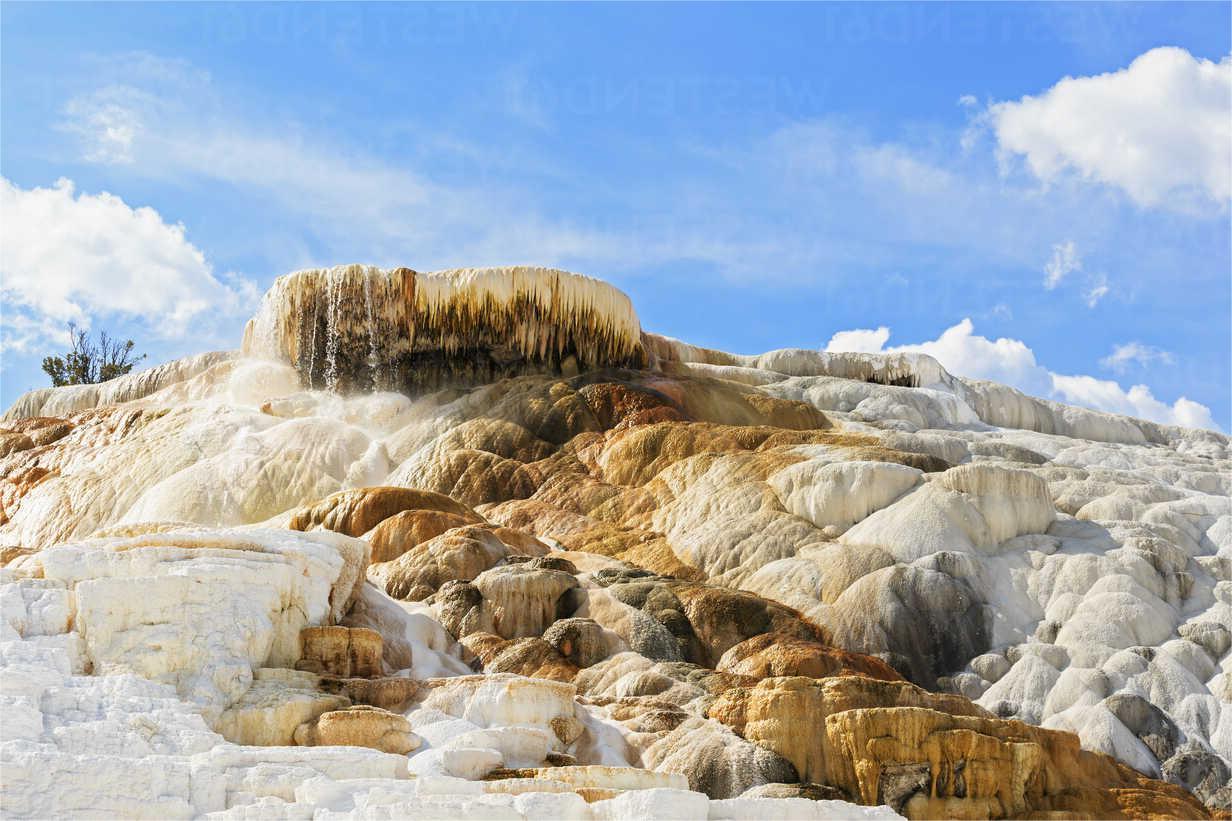Curious Facts About Wyoming’s Mammoth Hot Springs Limestone Terraces

Have you ever wondered what makes Wyoming's Mammoth Hot Springs so unique? These stunning limestone terraces are a natural wonder formed by hot water from the Norris Geyser Basin. As the water cools, it deposits calcium carbonate, creating the beautiful, layered formations you see today. The terraces constantly change due to the flow of water and minerals, making each visit a new experience. Wildlife like elk and bison often roam nearby, adding to the area's charm. Whether you're a nature lover or just curious about geology, Mammoth Hot Springs offers a fascinating glimpse into the Earth's dynamic processes.
What Makes Mammoth Hot Springs Unique?
Mammoth Hot Springs in Wyoming is a natural wonder that draws visitors from around the world. Its limestone terraces are a sight to behold, formed by hot water bubbling up from the ground and depositing calcium carbonate. Let's dive into some curious facts about this geological marvel.
The Formation of Limestone Terraces
The terraces at Mammoth Hot Springs are constantly changing, creating a dynamic landscape. Here are some fascinating aspects of their formation:
Thermal Activity: The hot springs are fueled by geothermal activity beneath Yellowstone National Park. Water heated by magma rises to the surface, dissolving limestone along the way.
Calcium Carbonate Deposits: As the hot water cools, it deposits calcium carbonate, forming the terraces. This process is ongoing, so the terraces are always evolving.
Colorful Microorganisms: The vibrant colors of the terraces come from thermophiles, microorganisms that thrive in hot environments. These organisms create hues of orange, yellow, and green.
The Role of Hydrothermal Features
Hydrothermal features play a crucial role in shaping Mammoth Hot Springs. These features include hot springs, fumaroles, and geysers.
Hot Springs: The hot springs are the primary source of water for the terraces. They can reach temperatures of up to 170°F (77°C).
Fumaroles: These steam vents release gases from deep within the Earth. They contribute to the unique smell of the area, often described as sulfuric.
Geysers: While not as common at Mammoth Hot Springs, geysers occasionally erupt, adding to the dynamic nature of the landscape.
The Historical Significance
Mammoth Hot Springs has a rich history that dates back to Native American tribes and early explorers.
Native American Use: Indigenous tribes used the hot springs for their healing properties. They believed the waters had spiritual significance.
Early Explorers: In the 19th century, explorers documented the hot springs, bringing them to the attention of the wider world. Their reports helped establish Yellowstone as the first national park.
Conservation Efforts: Today, the National Park Service works to preserve Mammoth Hot Springs. Efforts include monitoring thermal activity and protecting the delicate ecosystem.
Wildlife Around Mammoth Hot Springs
The area around Mammoth Hot Springs is teeming with wildlife, adding to its allure.
Elk: Elk are commonly seen grazing near the terraces. They are especially visible during the fall mating season.
Bison: These massive animals roam the area, often seen near the hot springs. They are a symbol of the American West.
Birds: Various bird species, including osprey and peregrine falcons, can be spotted around the hot springs. The area provides a rich habitat for avian life.
Visiting Mammoth Hot Springs
Planning a visit to Mammoth Hot Springs? Here are some tips to make the most of your trip.
Boardwalks: The best way to explore the terraces is by walking along the boardwalks. They provide safe and easy access to the most stunning views.
Visitor Center: Stop by the Albright Visitor Center to learn more about the geology and history of the hot springs. Rangers offer guided tours and educational programs.
Photography: Bring a camera to capture the breathtaking scenery. Early morning or late afternoon light offers the best conditions for photos.
Seasonal Changes at Mammoth Hot Springs
The appearance of Mammoth Hot Springs changes with the seasons, offering a unique experience year-round.
Spring: Melting snow and increased water flow create vibrant terraces. Wildlife is also more active during this time.
Summer: Warm weather makes it the most popular time to visit. The terraces are lush and colorful.
Fall: Cooler temperatures and fewer crowds make fall a great time to visit. The changing leaves add a beautiful backdrop.
Winter: Snow-covered terraces create a magical, serene landscape. The hot springs steam in the cold air, offering a unique contrast.
Mammoth Hot Springs is a must-see destination for anyone visiting Yellowstone National Park. Its ever-changing terraces, rich history, and abundant wildlife make it a truly special place.
Why Mammoth Hot Springs Should Be on Your Bucket List
Mammoth Hot Springs in Wyoming is a natural wonder worth visiting. The limestone terraces are not just visually stunning but also a testament to the power of geothermal activity. Formed over thousands of years, these terraces offer a unique glimpse into the Earth's geological processes. The area is rich in wildlife, making it a great spot for nature lovers. You can see elk, bison, and various bird species. The hot springs themselves are a marvel, with water temperatures reaching up to 163°F. This makes the springs a year-round attraction, even in winter. Whether you're interested in geology, wildlife, or just looking for a beautiful place to relax, Mammoth Hot Springs has something for everyone. Don't miss out on this incredible destination.

